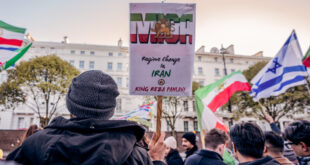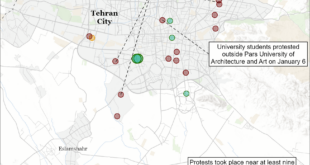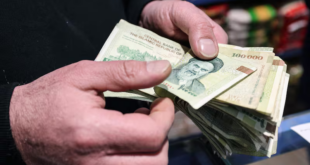VIENNA (Reuters) — Atomic inspectors are expected to report today that Iran has not only ignored an imminent UN deadline to stop enriching uranium but markedly expanded the programme, exposing Tehran to broader sanctions.
But the UN nuclear watchdog chief says Western powers’ strategy of making a halt to enrichment a precondition of talks is out of date. He says they should focus on limiting the programme to a level that would pose little risk of yielding atom bombs.
The West suspects Iran is using a declared civilian nuclear energy programme as a facade for mastering the means to make atom bombs. Oil-producing Iran says it seeking only an alternative source of energy.
In remarks published last week, Mohammad Al Baradei said Iran seemed to have overcome a number of technical obstacles in shifting from a research-scale towards a planned industrial-scale production of nuclear fuel over the past few months.
“I believe that demand (for suspension) has been superseded by events,” Baradei, director of the International Atomic Energy Agency, was quoted by the Spanish daily ABC as saying in an interview carried online.
“In the absence of guarantees that this is a peaceful programme, the important thing now is to concentrate on Iran not taking it to industrial scale and on the agency having full powers of inspection,” he said.
“If one is capable of sitting down with North Korea, despite it [having developed] nuclear weapons, [world powers] should be able to do the same with Iran … However, I detect a gradual escalation lowering the options for a peaceful solution.” As the UN Security Council’s latest 60-day grace period given Iran to back down was running out, Tehran vowed not to freeze its quest for atomic energy before, during or even as an outcome of negotiations.
US officials said six major powers would start drafting a third, harsher batch of sanctions if Iran flouted the May 24 deadline. Diplomatic leaks ahead of the IAEA inspectors’ report left little suspense about its verdict.
‘Continuous’ enrichment work
“[Enrichment] centrifuges are spinning and more are being built. People should wake up and understand Iran has the knowledge and that can’t be taken away. A face-saving compromise is needed,” said a Vienna diplomat familiar with inspections.
Iran had hooked up over 1,600 centrifuges as of the first half of May, diplomats said, raising its potential enrichment capacity fivefold since the last IAEA report in February. Tehran had been installing about one cascade a week of late, they said.
 Baradei told ABC 1,300 of the centrifuges were running “continuously”, refining the fissile element of uranium to the 5 per cent level suitable for use as power plant fuel. “The Iranians recently started speeding up the centrifuges.
Previously they worked at [experimental] low speed, now they are at full speed,” said another diplomat monitoring inspections.
Iran insists it is enriching uranium only to generate electricity, not to fashion the explosive core of warheads which requires fissile purity of 80-90 per cent.
At its current pace of installation, Iran could have 3,000 operating by end of June, a threshold it has set to lay the basis for industrial production involving some 50,000.
Three-thousand could produce enough highly enriched fuel for one bomb within a year, assuming Iran wanted to take that route.
But Iran has not yet demonstrated it can run many cascades in interconnected unison at supersonic speed for long periods, the key to attaining that nuclear “breakout” capability.
“Today, Iran does not pose an imminent threat,” Baradei said. But US, British, French and German leaders say the fact Iran could still fine-tune the process with a few thousand centrifuges must not be lost in diplomatic calculations.
 Eurasia Press & News
Eurasia Press & News



